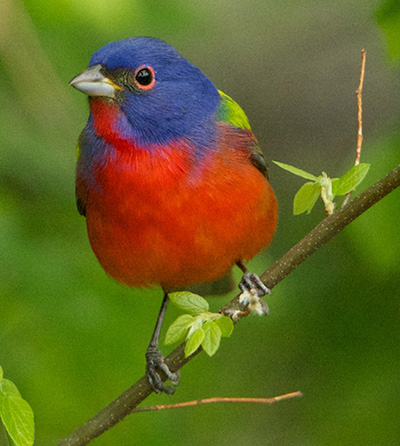Native Plant Conservation Campaign News: New study – bird populations declined by 29% or 3 billion individuals since 1970

September 23, 2019
Action alert from our colleagues at the American Bird Conservancy:
To: All Bird Conservationists
From: Steve Holmer, American Bird Conservancy
The Bird Crisis and What We Can Do About It – Action Alert
Dear Friends,
Here is today’s disturbing headline: Nearly Three Billion Fewer Birds in North America Since 1970
This news, along with other reports of insect decline and accelerating climate change are clear indicators much more needs to be done to conserve our natural world. And we can do it. Here’s a quick rundown of things that you and your organization can do right now to respond to the Bird Crisis.
Take Action: Please generate as many letters to Congress as you possibly can. Here’s a link
https://abcbirds.org/action/petition-bird-crisis that will generate letters to both your Senators and Representative in support of conservation priorities needed to begin to address the Bird Crisis. Organizations, please send out this alert link to activists or generate similar letters.
Learn More: Some amazing materials have been put together for your use including a press release, seven personal actions that you can take in your daily life, policy actions, and factsheets; all are available at
3BILLIONBIRDS.ORG
Webinar
Summary of the Study: North America has lost nearly three billion birds since 1970, according to a new report, which also details widespread population declines among hundreds of North American bird species, including those once considered abundant. The results signal a long-developing yet largely overlooked biodiversity crisis occurring in avifaunal habitats across North America. Human impacts have contributed to an increase in global extinctions. Research focused on understanding extinction is underway, but much of it fails to recognize ongoing declines in “abundance” within still-common species, even as such declines can have significant ecological, evolutionary and economic impacts.
“Given the current pace of global environmental change, quantifying change in species abundances is essential to assess ecosystem impacts,” Kenneth V. Rosenberg and colleagues say. Evaluating these declines requires large and long-term datasets, which do not exist for most animals. However, long-term, detailed records do exist for bird populations. Using multiple standardized bird-monitoring datasets, Rosenberg et al. analyzed the net change over recent decades in numbers of birds for 529 species in the continental United States and Canada.
Their results show a loss of nearly one in four birds since 1970 – a net loss of 2.9 billion birds. According to the authors, more than 90% of this loss can be attributed to 12 bird families, including songbird species like sparrows and warblers. However, not all species are on the decline; some bird species, including raptors and waterfowl, showed population gains – likely due to focused conservation efforts and Endangered Species legislation. Similar strategies for other species could avert the potential collapse of North American avifauna, the authors say.
To expand their analysis, the authors used migration data from the NEXRAD radar network to estimate long-term changes in nocturnal migratory passage. The results, similar to those from the ground-based bird-monitoring datasets, reveal a steep decline for migrating birds over a recent 10-year period, particularly in the eastern U.S.
NOTE: The study did contain some hopeful news
Photo: Doug Tallamy

